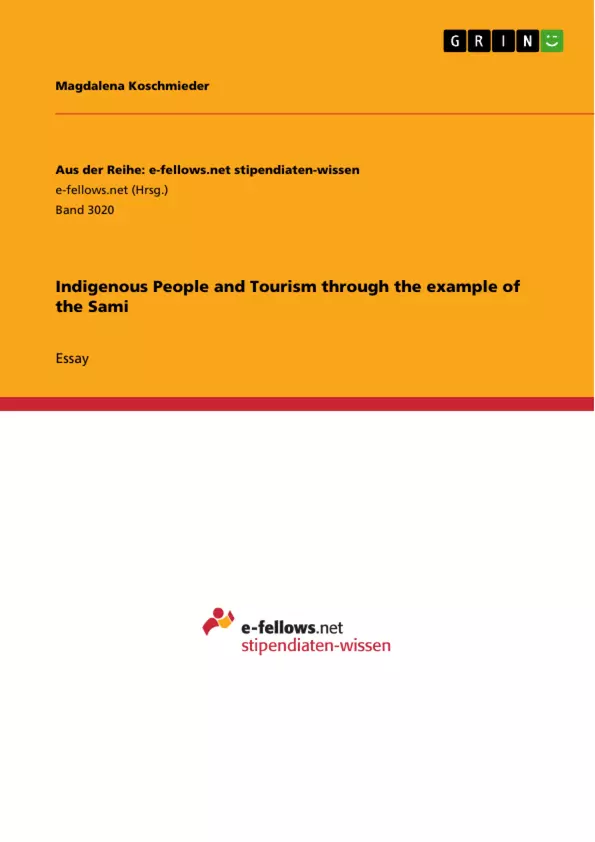In this paper, I will present what tourists expect from their visit at indigenous peoples at the example of the Sami people and why they expect that. This will be based on an analysis of tourism advertisements of the Sami. Finally, there will be shown some ideas of how indigenous peoples tourism could be improved.
The Sami are an indigenous people living in northern Norway, Finland, Sweden and the Kola-Peninsula in Russia. When walking through the streets in Alta, Finnmark, you usually do not recognize them as such, unless they wear the kofte, their traditional clothing. Nevertheless, they are present among the Norwegians living there even if there is no obvious cultural representation. Hall (1997) defines representation as “using language to say something meaningful about, or to represent, the world meaningfully, to other people” and says further that “representation is the production of meaning through language”. Thus, the meaning about something like culture is just constructed.
Inhaltsverzeichnis (Table of Contents)
- Introduction
- Method/Material
- The representation of the Sami in tourism
- Conclusion
Zielsetzung und Themenschwerpunkte (Objectives and Key Themes)
This paper analyzes how the Sami people, an indigenous group in northern Norway, are represented in tourism. It investigates the expectations tourists have when visiting Sami communities, explores the impact of tourism on Sami culture, and discusses the challenges and opportunities associated with indigenous tourism.
- The representation of the Sami in tourism
- The impact of tourism on indigenous culture
- The role of authenticity in indigenous tourism
- The challenges and opportunities of indigenous tourism
- The influence of colonialization and "Othering" on indigenous representations
Zusammenfassung der Kapitel (Chapter Summaries)
- Introduction: This section introduces the Sami people, their cultural identity, and the concept of representation in tourism. It sets the context for examining the expectations and perceptions surrounding Sami culture in the tourism industry.
- Method/Material: This chapter explains the research methodology and sources used in the paper, including literature review, personal experiences, and an analysis of tourism advertisements.
- The representation of the Sami in tourism: This chapter focuses on analyzing the expectations tourists have when visiting Sami communities. It examines how “authenticity” is constructed and how tourists' perceptions are often based on romanticized and stereotyped representations of Sami culture. The chapter also discusses the influence of colonialization and “Othering” in shaping these representations.
Schlüsselwörter (Keywords)
This paper explores the representation of indigenous peoples in tourism, specifically focusing on the Sami people in Norway. It examines the concepts of authenticity, cultural representation, "Othering," and the challenges and opportunities presented by indigenous tourism. Key terms include: tourism, indigenous peoples, Sami, authenticity, stereotypes, colonialization, "Othering," cultural representation, tourism industry, cultural tourism, and indigenous tourism.
- Quote paper
- Magdalena Koschmieder (Author), 2018, Indigenous People and Tourism through the example of the Sami, Munich, GRIN Verlag, https://www.grin.com/document/459383



